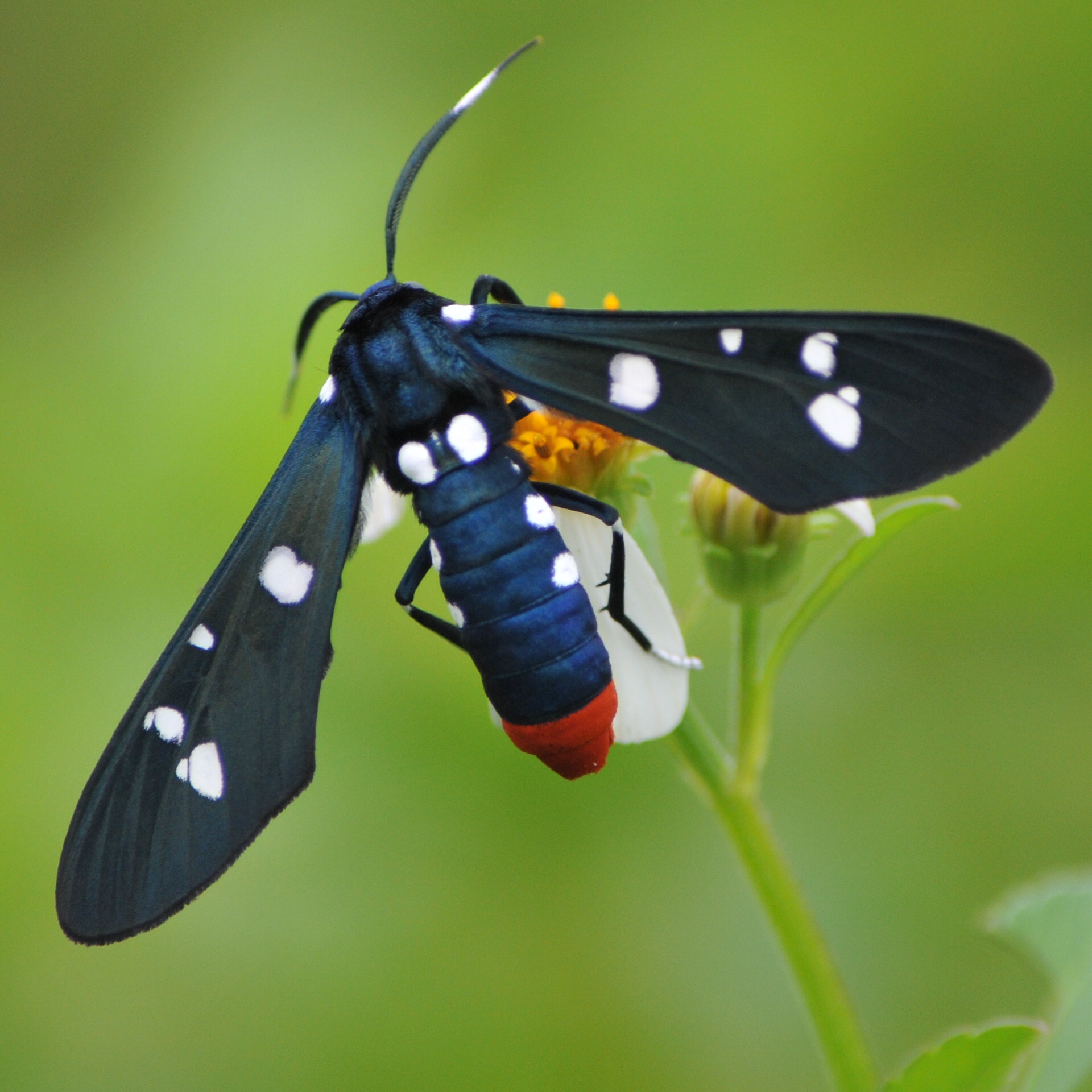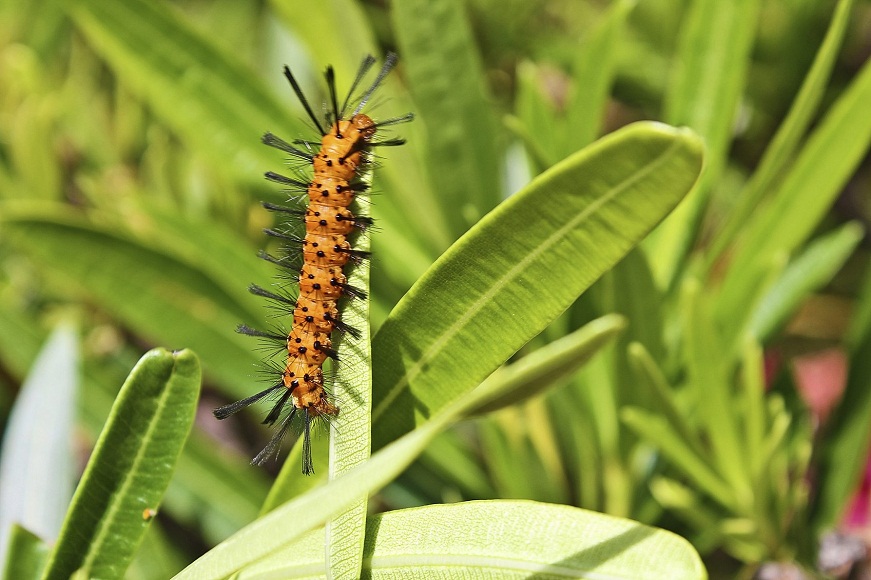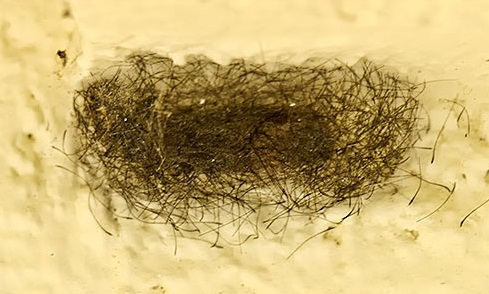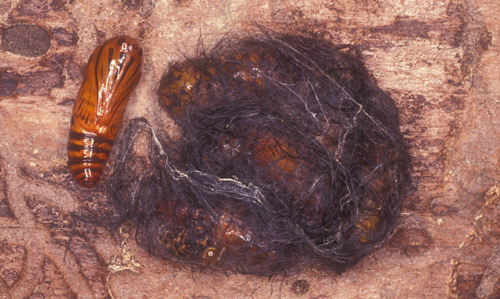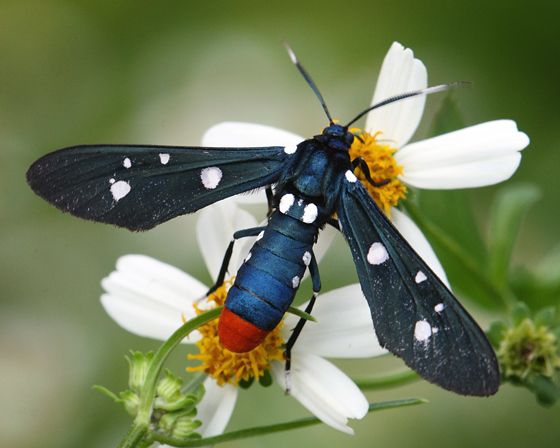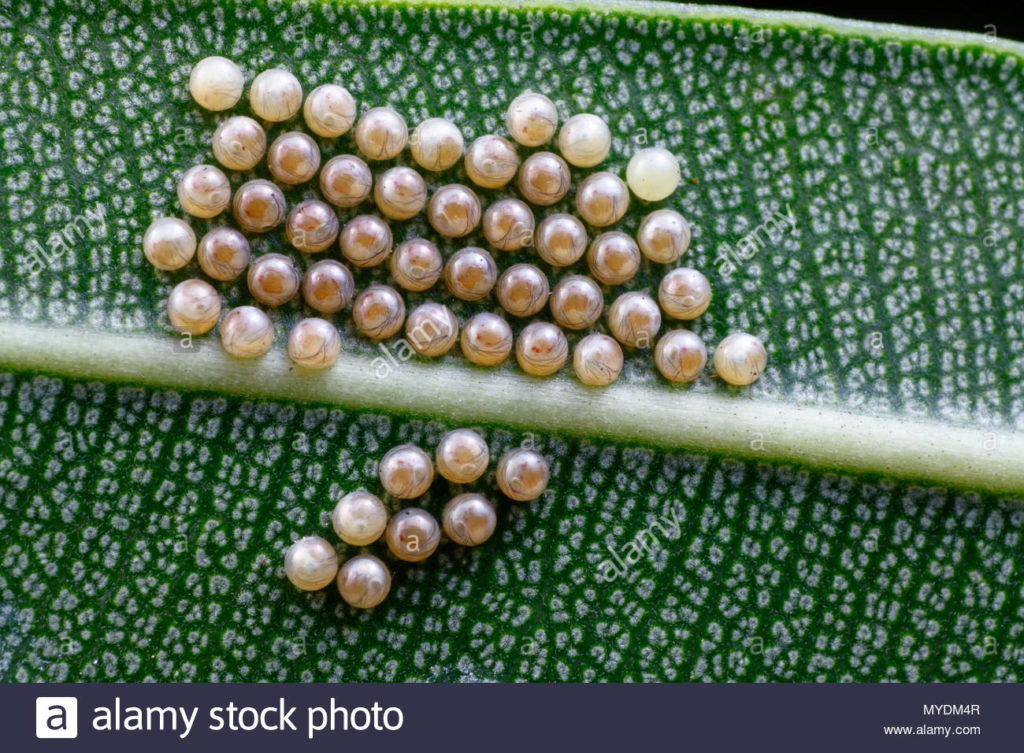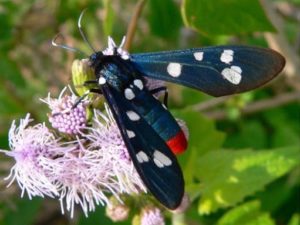Polka-Dot Wasp Moth (Syntomeida epilais)
Polka-dot wasp moth of the Erebidae family is a native of the Caribbean Islands. The polka-dotted pattern on the wings and abdomen makes them appear increasingly attractive, also being an outcome of their name. The larvae of this species mostly thrive on oleander plants, giving them their alternate name, oleander.
en.wikipedia.org
Scientific Classification
- Family: Erebidae
- Genus: Syntomeida
- Scientific Name: Syntomeida epilais
Description and Identification
Caterpillar
The polka-dot wasp larvae appear light or dark orange and covered in black hair rising from bumpy projections in their bodies. However, the hairs are not urticating, not causing pain or any other harm when touched.
They feed voraciously on the oleander plants, particularly the shoots and leaves, turning them to light brown.
Adult
Sexual Dimorphism: Present but not prominent
Both the sexes have close similarities when it comes to appearance.
Color and Appearance
When opened, the forewings and hindwings have a dark metallic blue coloration with white polka dots all over. When closed, the color remains unchanged, with a lesser number of dots visible.
The same blue and white combination is seen on their upper abdomen also. However, the abdominal tip appears bright red or orange.
Average Wingspan: 4.5 – 5.1 cm
Flight Pattern: Consistent
Season: All-year-round
Quick Facts
| Other Names | Oleander moth |
| Distribution | Caribbean Islands, and also parts of North America (Florida, South Carolina, Texas, Mississippi) |
| Habitat | Mostly near areas where the oleander plant grows |
| Predators | Not recorded |
| Lifespan of Adults | 5 – 10 days |
| Host Plants | Oleander, as well as desert rose, and devil’s potato plants |
| Adult Diet | Don’t feed due to their short lifespan |
Did You Know
- The two subspecies of the polka-dot wasp moth include Syntomeida epilais epilais and Syntomeida epilais jucundissima .
- They mimic the dangerous wasps, and in this way, safeguard themselves from their prey. Yet, these moths are not as harmful as the wasp species they resemble.
Scientific Classification
- Family: Erebidae
- Genus: Syntomeida
- Scientific Name: Syntomeida epilais

